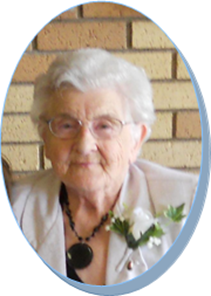I was talking to my good friend Fred (Tiff) Schmidt a few days ago. He was born and raised in this community so he knows a lot about the early history of Anamoose. He and his wife, Julia, live in Harvey now. We were discussing hotels of bygone years. I thought it might be of interest to some of the readers of the Valley Star. In the early 1900s. Anamoose had three hotels. The Walker Hotel was located where the old post office building (now vacant) stand on the west side of Main Street. At the far end of that block, facing northeast toward the railroad tracks, placed diagonally on the lot was the Commercial Hotel. Some people called it the “Farmer’s Hotel” as most farmers liked this hotel because they provided a lot of room for their horses, wagons and carriages. Farther down on Main Street, on the east side where the old Thurow Garage is located was the Ma Porter Hotel. Ma Porter was the woman with the very talkative polly parrot. The Commercial Hotel burned down in 1907 when that whole block burned to the ground. All of the buildings were wood frame structures, except the Walker Hotel which was made of brick. It was the brick wall that saved Glotzbach’s Drug Store and Albrecht Brothers Grocery Store. In spite of a lot of setbacks in those early years the city of Anamoose thrived. In 1916-18, we had a population of about 800 people. It was also in 1916 that Norman Walper came to town and built a power plant so that Anamoose could have electricity for 24 hours a day. 1916 was a very busy year for the city.. Johan J. Schmidt built the Waldemar Hotel. It was located on the corner where the present Senior Citizen Center now stands. It was a brick building. The Waldemar had 25 rooms and a parlor upstairs, one bath, two toilet facilities, one for the men and one for the women. The guest had to take “turn” numbers for bathing. Times would vary as to when you took your bath. You would have to get the key which was always locked up. The opening of the Waldemar back then was a major event in Anamoose. They held a banquet in their huge Banquet Hall. In the history of J.J. Schmidt Family, they say that the main speaker was F. J. Conklin who spoke about ”The Essentials Necessary to Build Up a Wide Awake City”. Guests were served Chinook Salmon, roast young turkey, veal and jellied tongue with all of the trimmings. There was an orchestra from Harvey, directed by Harold Bachman with vocal solos by Mrs. C. W. Zeilhoefer of Minot. In the early years of the Waldemar Hotel, the passenger trains were met by someone of the Schmidt family. The luggage was put into a pushcart, then taken to the hotel where the guest signed in and were taken to their rooms. The Soo Line Railroad had four or five passenger trains going through here back then. After the Waldemar Hotel was destroyed by fire in 1921, travelers would stay at the J.J. Schmidt home which had been partially made into a hotel. It was a huge, spacious, beautiful home. There were five bedrooms, a bath, and a huge linen closet on the second floor. Each room had its own clothes closet. Downstairs, there were four rooms, kitchen and pantry. There were four bedrooms on the third floor. The house had a good well outside and had two big tanks of water in the basement besides the cistern for rainwater. In the fall, the Schmidts would buy 1500-2000 pounds of flour. Mrs. Schmidt did the baking for her family and guests. Home cooked meals were served. When the Waldemar Hotel burned, the Frankhauser family opened their huge cement block home to travelers, too. Their home was built around 1907. They also suffered a fire in days gone by, but it was contained to one bedroom upstairs. They suspected faulty wiring at the time. When they rebuilt Highway 52, many of the men who worked on the crews stayed at the Frankhauser Hotel. That was back in the 40s. Many years ago, the J.J. Schmidt home also burned down. The house was situated where Norman and Gloria Chapek live today. ( 2010-Present Chris Ammon’s home). It seems strange to my mind that at one time there was so much here in our small community and now it has passed away as so many things have in the small towns that were built along the railroad tracks. As the trains began cutting passenger trains, the advent of trucks and easy travel by car, the small towns began to dwindle, hanging on to their schools which has kept the little communities going. That’s something to think about.
|
